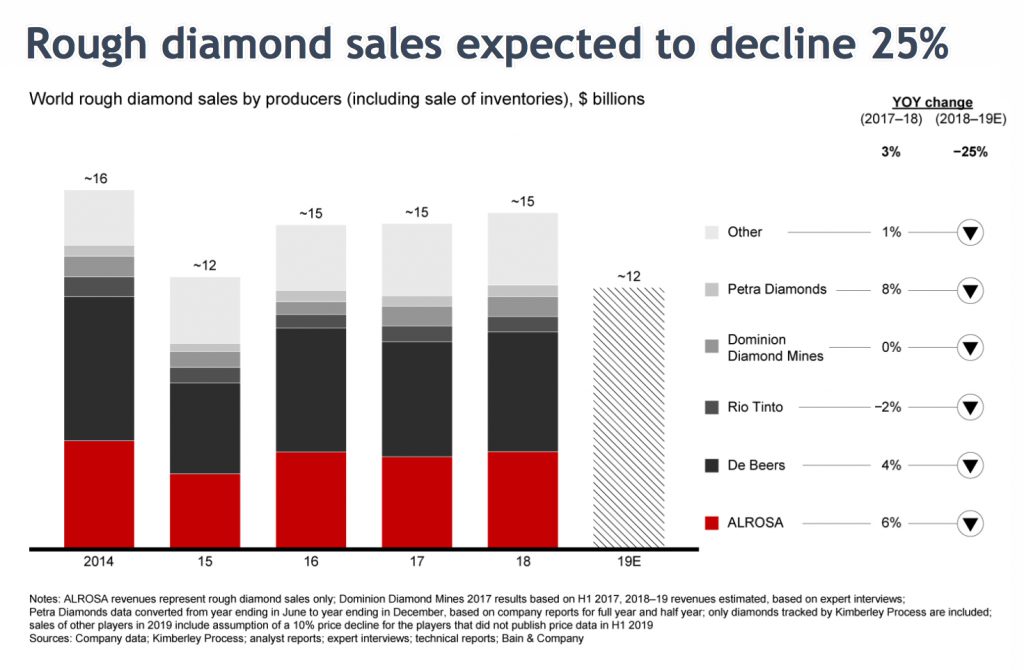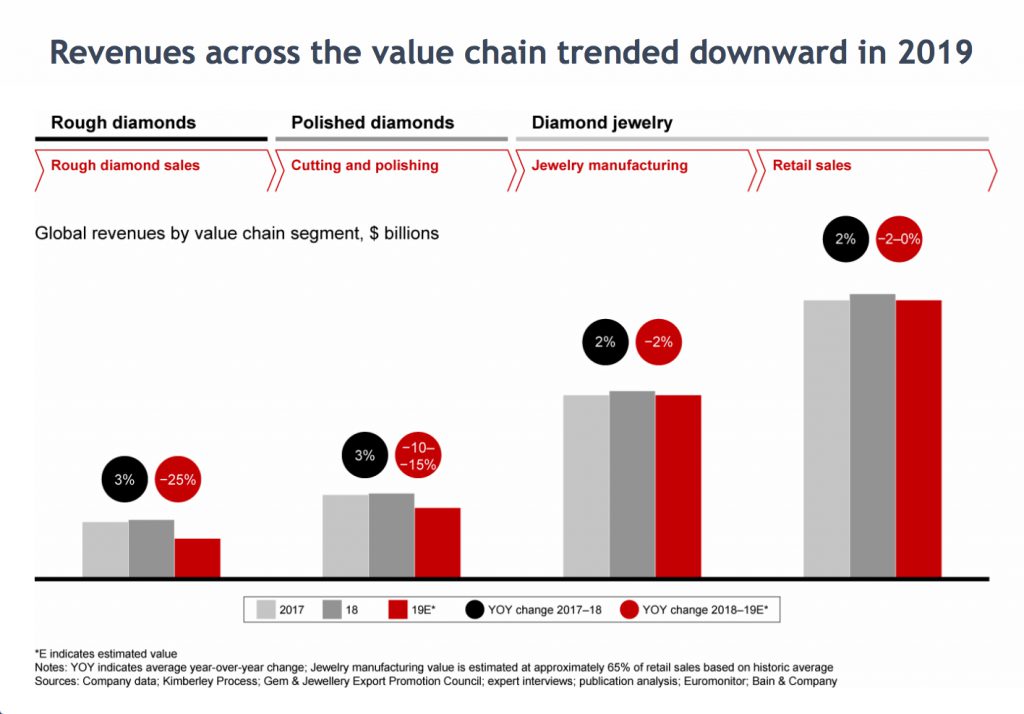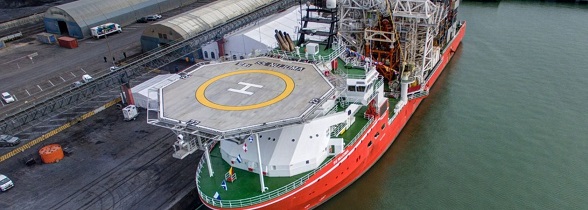De Beers and its clients expect a slowdown in rough-diamond sales at the company’s Botswana sight this week amid concerns about the coronavirus.
“It’s fair to say there will be an impact on rough demand in the short term,” De Beers chief financial officer Nimesh Patel said Thursday in an interview with Rapaport News. “I’d expect we’d see that at the [February] sight.”
The downturn in China’s retail market due to the virus outbreak has left manufacturers uncertain how long it will take them to sell diamonds they cut. Companies that supply to that region have been especially affected.
Rough that can produce polished with clarity above VS has shown weakness in recent tenders due to the lower Chinese demand, one sightholder said on condition of anonymity. Lower-clarity items destined for the American market have performed better, he added.
“It’s a mixed picture,” the sightholder explained. “People that are strongly focused on the Far East will be reluctant to buy, while those that work with the US and maybe Europe still seem to be going OK.”
De Beers will hold back goods rather than lowering prices, the dealer added, predicting that the sight would be small in value. The miner has kept prices stable for the sale, which began Monday, two sightholders confirmed with Rapaport News.
Another De Beers client expected buyers would take up most of their allocations at this sight, but said the next sale beginning March 30 would be weak if the coronavirus difficulties were still going on.
“I’m hopeful this crisis might not last more than two or three weeks,” he said.
Meanwhile, Patel pointed out that some goods could be rerouted from China to other markets, while certain constant sources of demand, such as weddings, would be delayed rather than disappearing completely. In addition, the midstream has started the year with relatively low inventories due to a reasonably strong fourth-quarter holiday season, putting it in a good position to weather the difficulties, he said.
“We’ve been through periods like this before in the industry,” the executive said. “This is, hopefully, a one-off impact, and the sooner the virus can be contained, and the sooner we can get back to the normal operation of those economies, the better.”
Source: Diamonds.net





